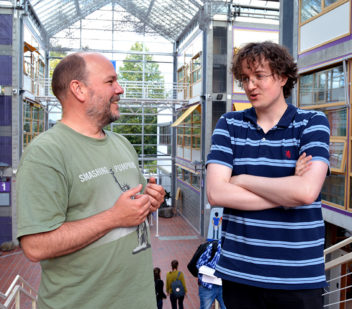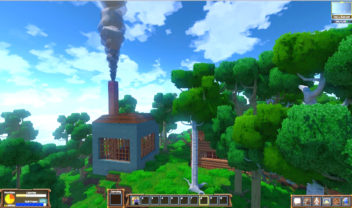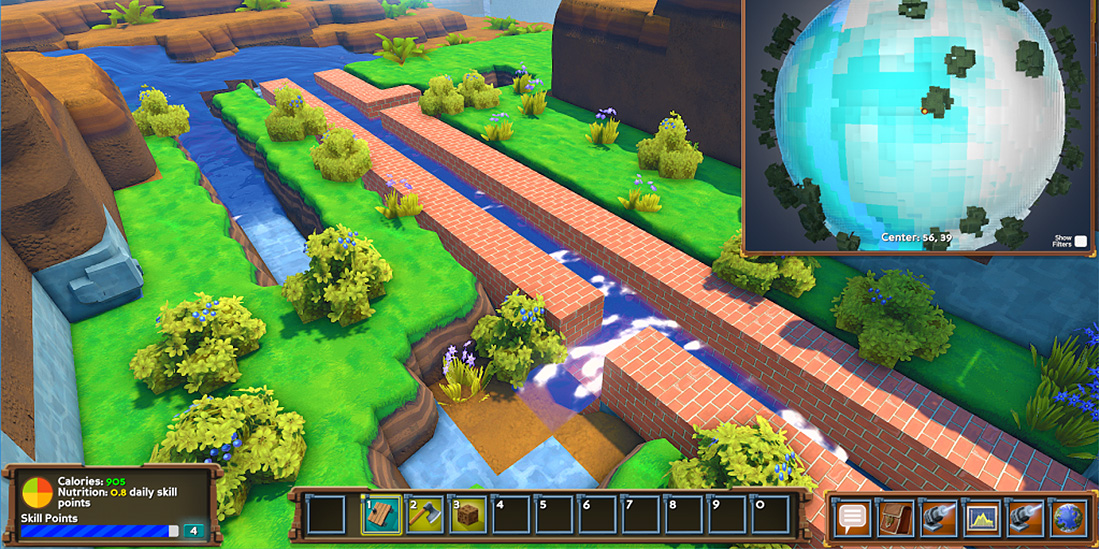Green gaming for the environment
Computer games designed to make us more environmentally conscious need to be both entertaining and educational. Few game designers are good at both. NTNU researchers are creating a model that can bridge the gap between the two.
PLAY: Can computer games influence us to make better environmental choices? NTNU researchers are hunting for the answer – and for what kind of games can have a positive impact on our attitudes, habits and environmental choices.

“Environmental games should be entertaining to play and learn from,” say Christian A. Klöckner and Kristoffer S. Fjællingsdal, researchers at NTNU’s Department of Psychology. Photo: Vibeke Pettersen / NTNU
Entertainment first
The success of this goal depends most of all on the game’s design and content.
“The entertainment value has to be high for the games to catch players’ interest. They can’t be perceived as green propaganda,” says Professor Christian A. Klöckner in NTNU’s Department of Psychology.
“The games can’t come across as a digital lecture, either,” says Kristoffer S. Fjællingsdal, a PhD candidate in the same department. “Games are a separate medium with their own requirements. They can be more complicated and more involved than regular lectures,” he adds.
One of the first commercial games with an environmental theme was Fate of the World. It came out in 2011 and received relatively good reviews. In the game you can influence the fate of the world in different ways – by focusing on oil or climate, for example. Players can also choose to concentrate their play in various regions.
- You might also like: Why we struggle to change our climate habits

A house with carbon emissions, from the environmental game ECO. Illustration: www.strangeloopgames.com
Bridging game design and education
Some environmental games are made by people who don’t know anything about game design. And people who design games often don’t know anything about pedagogy. This is the dilemma that Klöckner and Fjællingsdal’s are addressing in their research. The researchers want to build a kind of interdisciplinary bridge – or model – between game design and learning so that the games can be designed in a way that makes them both entertaining and educational. This model, to be used in future studies, is called ENED-GEM (ENvironmental EDucational Game Enjoyment Model).
- You might also like: Stinky air as climate art
High school students test games
Klöckner and Fjællingsdal have collaborated with a number of Trondheim schools, and will see whether games with environmental themes can influence students’ attitudes and knowledge about the environment. This study is scheduled to start this autumn.
“We use a classroom package with the environmental game ECO from Strange Loop Games, which is a virtual world with an ecosystem where balance needs to be maintained to achieve success. The game provides direct experience with environmental issues in a virtual space: everything the player does affects the ecosystem. Often negatively. The player also has to propose and vote on laws about how resources and the environment should be managed to avoid destruction,” says Fjællingsdal.
Article continues below the trailer from the ECO environmental game from Strange Loop Games.
Green gaming for master’s students
The researchers aren’t only focusing on digital games. Green board games interest them too. Fjællingsdal is conducting an interdisciplinary course as part of NTNU’s Experts in Teamwork (EiT) program. The theme of the EiT–Villages 2018 course is green gaming. Here master’s students are developing board games with environmental themes. EiT–Villages is collaborating with NTNU Sustainability, one of the university’s thematic focus areas.
Read the research article in Frontiers in Psychology:





